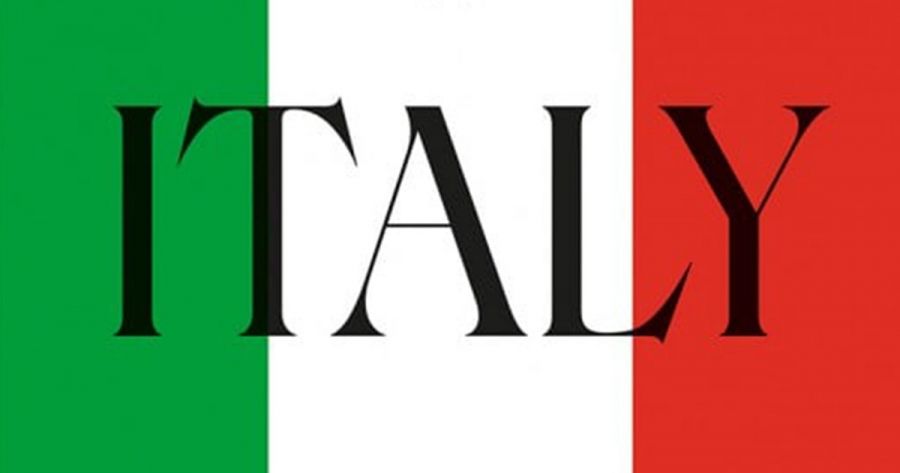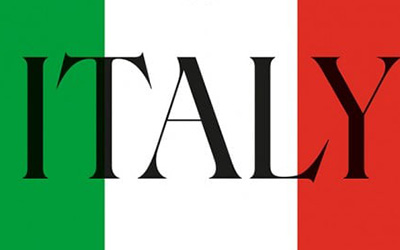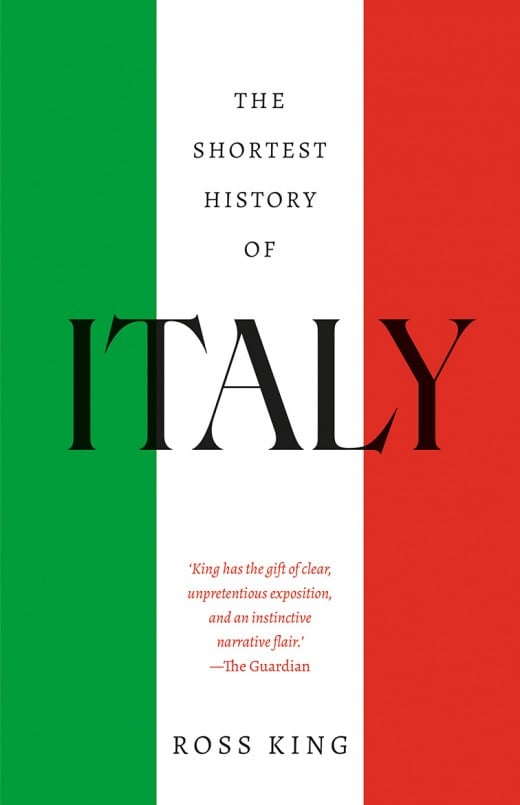
- Free Article: No
- Contents Category: History
- Review Article: Yes
- Article Title: History short and bittersweet
- Article Subtitle: Italia, broadly synthesised
- Online Only: No
- Custom Highlight Text:
This book is orthodox in its range (from the foundation of Rome to the Covid pandemic), organised into specific historical periods (Renaissance, Illuminismo, Risorgimento), and traditional in telling history largely through eminent biographies and great historical events.
- Featured Image (400px * 250px):

- Alt Tag (Featured Image): Claudio Bozzi reviews ‘The Shortest History of Italy’ by Ross King
- Book 1 Title: The Shortest History of Italy
- Book 1 Biblio: Black Inc., $27.99 pb, 262 pp
- Book 1 Cover Small (400 x 600):

- Book 1 Cover (800 x 1200):

It is one thing to be fair to Julius Caesar, and another to be cogent on Caligula. Caesar has been the subject of the most varied judgements of any historical figure, from the epitome of virtus Romana to a self-seeking opportunist. His reputation is in part the product of historian senators such as Tacitus reflecting on a consul who, five years after crossing the Rubicon in defiance of a law requiring him to lay down his command, established one-man rule in place of the Republic with himself as dictator perpetuo. But Caesar did not kill the Republic, which had long been a rule of oligarchs; he merely pushed the corpse aside to enable a view beyond it.
The tawdry figure of Caligula – doubtless a moral monster – brings into sharp focus the difficulties of interpreting controversies of the ancient past. His biography was written in the reign of his successor, Claudius, who had every reason to denounce his inherent evil rather than the corrupt system which had handed him power. King repeats the famous allegation that Caligula intended to appoint his favourite horse, Incitatus, as consul. Most modern scholars treat it as the misinterpretation of a comment to the effect that so many asses had already entered the consulship that the emperor was considering appointing a noble steed.
Assessing the place of women in Roman society is complex. They were, observed Ulpian, ‘separated from all civic and public functions’, and it was anomalous for them to appear in the Republican Forum other than for religious purposes. King refers to Hortensia’s speech of 42 bce in the Forum against a proposed tax on her and fourteen hundred other wealthy women without any provision of equal rights to offices, honours, and military commands. But not to the fact that Hortensia only came to the Forum after being turned away by Fulvia, having been obstructed from pursuing traditional ways of influencing men through their wives or relatives at home.
Women actively participated in the common business of the city, and numismatic evidence suggests that they held public municipal office, including the position of priestess. Dismissing the Vestal Virgins as glorified housewives greatly undervalues their role. It is well to recall that it was they who interceded on Caesar’s behalf when Sulla (no less) would force him to divorce Comelia (Cinna’s daughter) so that he could be appropriately married into the patriciate.
Adhering to convention enables succinct coverage. In the tradition of Machiavelli and Guicciardini, the second half of the fifteenth century is depicted as a Golden Age in Italian history. Central to political explanations for this extraordinary flourishing is a Florentine identification with Roman republicanism, which laid the basis for an artistic revolution. Donatello’s David is singled out as a quotation of classical paradigms innovative in its capacity to mingle private and individual meanings. Nothing, however, is said of its close association with the rise to power of the Medici (who commissioned it) as unofficial lords of Florence. David’s political symbolism is imbued with the tension between the republican philosophy of civic humanism, which the Medici publicly sponsored, and the accumulation and concentration of power of which they were accused. The image celebrated the role of the Medici as – like King David – saviours of their people, at the same time as they were being condemned for denuding the city’s republican institutions.
Varieties of historical nationhood define the histories of all nations. The Risorgimento achieved independence from foreign control and national unification on liberal principles with the creation of a constitutional monarchy in 1861. After the end of despised French neo-colonial domination, in 1815 the advancing Austrian armies had been greeted as liberators, and Milan and Venice had acquiesced to formal annexation into the Hapsburg empire. But it was not, as King says, ‘business as usual’. Risorgimento activists capitalised on the administrative machine imposed by Napoleon I that wove the peninsula and its sundry populations into, in the words of exiting Viceroy Eugene Beauharnais, a virtual ‘nation italienne’.
Fascism organised the nation as a ‘corporative state’ subordinating all sectors of society to government rule (totalitarianism). An ideology of imperialistic and mystical nationalism informed a calamitous colonial enterprise in Ethiopia and a ruinous attempt at Great Power status. A sustaining but mythical Roman history was seen as part of the direct and privileged heritage of Italy (‘For the Italian people,’ said Benito Mussolini, ‘it is as if Caesar was stabbed just yesterday’).
After World War II, Italy undertook a historically unique revolutionary transition from Fascism and liberal monarchy to constitutional republic without a revolution, by ingeniously adapting the legal formalities of the Fascist era.
The Risorgimento had not solved (or even considered) the problem of how to involve the people in political life. In the words of Massimo d’Azeglio, Italy was made, but the Italians remained to be made. Initially, Italianisation was a linguistic problem in the sense that regional languages made it impossible for people to communicate beyond their local area unless they had access to a common language in wider circulation.
In the 1960s, Aldo Moro recognised with the slogan ‘Completare il Risorgimento’ that economic unification was incomplete. Progressive nationhood would only deliver equal opportunities and political representation for all citizens through economic development. The Cassa per il Mezzogiorno – at which King glances, before misguidedly dismissing it as a victim of mafia corruption – was part of a broad program of postwar reconstruction representing Italians’ collective effort to confront the damage of the past, including the historical problem of inequality to which the Southern question was central.
Works of synthesis necessarily exclude, and this is a work of the broadest synthesis. It is unbalanced in devoting over a third of its length to Rome. It ignores the people as historical agents. It also substantially avoids dealing with the major undertaking of postwar Italian history: the painful work of memory in confronting the Fascist past and re-evaluating the Resistance. There is no mention, for example, of the partisan actions at Via Rasella and the indiscriminate Nazi reprisal at the Fosse Ardeatine – a unique symbol of the tragedy of the war as a whole where Catholic, Jewish, and communist memories merge.
Silvio Berlusconi is portrayed as il Cavaliere but his effect on Italian politics is ignored. The legacy of Berlusconismo is the personalisation of politics centred on the leader devoid of any sense of party purpose. Giovanni Giolitti – the greatest Italian statesman after Cavour – draws a complete blank. And the book is incomprehensibly silent on Italy as a founding member of the European Union, which defines its late-twentieth and twenty-first century nationhood and dominates its political culture.


Comments powered by CComment